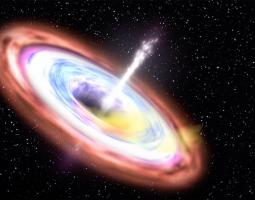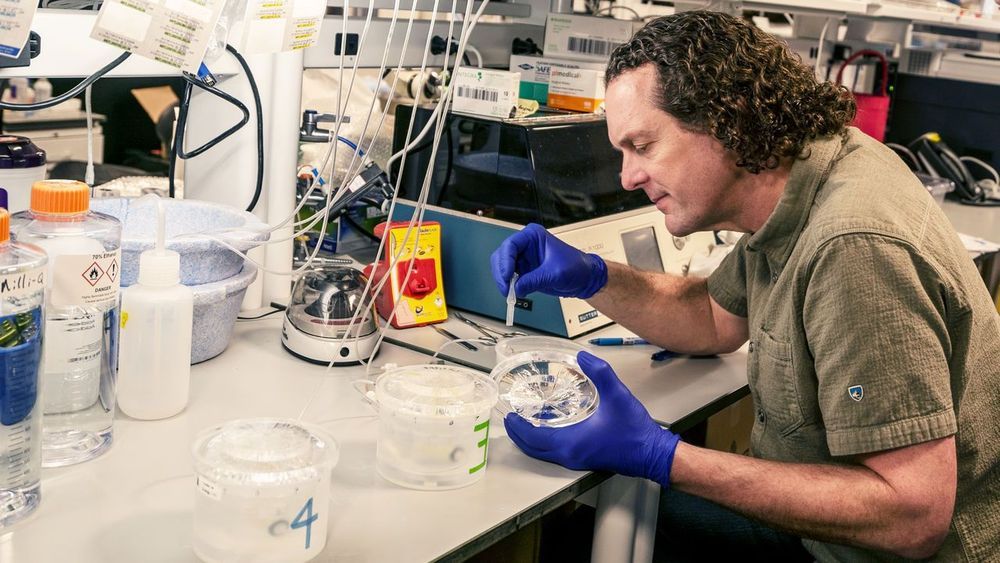Revised version greatly expands reach of controversial rule, analysts say.



What is dark energy? More is unknown than is known — we know how much there is, and we know some of its properties; other than that, dark energy is a mystery — but an important one. Roughly 70% of the Universe is made of dark energy. Dark matter makes up about 25%. The rest — everything on Earth, everything ever observed with all of our instruments, all normal matter adds up to less than 5% of the Universe. Then again, maybe it shouldn’t be called “normal” matter since it is a small fraction of the Universe!

Dr. Frank Sabatino is currently the Health Director of the Balance for Life Health Retreat, a lifestyle education center specializing in plant based nutrition, health rejuvenation, stress management, therapeutic fasting and detoxification.
“Our task is to make nature, the blind force of nature, into an instrument of universal resuscitation and to become a union of immortal beings.“
- Nikolai F. Fedorov
We hold faith in the technologies & discoveries of humanity to END AGING and Defeat involuntary Death within our lifetime.
Working to Save Lives with Age Reversal Education.
========== Perpetual Life Creed ==========
We believe that all of life is sacred and that we have been given this one life to make unlimited. We believe in our Creator’s divine plan for all of humanity to have infinite lifespans in perfect health and eternal joy, rendering death to be optional.

“The possibility that 100 years old might become the new 60” : EXCELLENT SLOGAN that doesn’t resort to the troublesome” I word” (“Immortality”)! Good article to share with non-science friends: light on hard science, but good emotional impact, incl. that catchy slogan.
Technology hasn’t just improved our lives; it’s also extended them — considerably.
For most of history, humans lived about 25 years. Real acceleration emerged at the turn of the 20th century, when everything from the creation of antibiotics to the implementation of better sanitation to the increased availability of clean water, and the ability to tackle killers like cancer and heart disease has us living routinely into our 80s. But many scientists believe we’re not stopping there.
Technological convergence is fueling this conviction. The intersection of artificial intelligence, cloud computing, networks, sensors, robotics, massive datasets, biotechnology and nanotechnology is taking direct aim at the limits of human lifespan.

Science Channel star “Mad Mike” Hughes died during an attempt to launch his homemade rocket Saturday.
“Our thoughts and prayers go out to Mike Hughes’ family and friends during this difficult time. It was always his dream to do this launch, and Science Channel was there to chronicle his journey,” the Science Channel said in a statement.
Hughes was scheduled to launch his homemade rocket for a new Science Channel series called “Homemade Astronauts,” according to the Discovery Channel website.
Do you want to stop ageing? Do you want to live forever? Can science help you cheat death? In this pioneering documentary, Professor Rose Anne Kenny takes us through the science and the consequences of living longer lives.
Imagine for a moment that old age became a thing of the past. Today, for better or for worse, it would appear that eternal life may soon be a reality. Some scientists are forecasting that the only way many humans will die is if they are shot or run over by a bus.
The programme unveils what is happening in age prevention, shows how we can lengthen our own lifespans and explains how some scientists now believe we are closer than ever to finding the Elixir of Life.
Such power over life itself poses many profound questions: what impact is it going to have on our societies? What preparations should our governments be making for an ever-ageing population? Do people really want to live longer and suffer the inevitable weakening of their capacities? And is it morally right to transcend human fallibility and assume the role of God?
Follow us on Facebook

According to a CIA document declassified on 08/07/2000 titled “Coordinate Remote Viewing (CRV) Technology 1981–1983,” submitted to the organization August 4 of 1983, coordinate remote viewing “utilized through the methodologies that have been developed…works with remarkable precision,” but the individuals who submitted it admitted that they were “unable to explain in conventional terms why it is that the co-ordinate serves as a stimulus in the manner it does.” Nevertheless, they were convinced that David Bohm’s model of quantum mechanics provided a potentially plausible explanatory hypothesis for the mechanisms that make it possible.
David Bohm was a controversial yet brilliant luminary in physics who argued that the entirety of the cosmos is populated with quantum black holes that lead from the “explicate order” of spacetime to a realm that transcends space and time which he referred to as the “implicate order.” These black holes were termed “holospheres,” and hypothesized as the mechanism which connects the implicate order to the explicate order. From the perspective of the remote viewer, it is possible that the signal line we acquire is mediated by these holospheres, which connects us with an implicate order that is conceptually more or less identical to the Eastern concept of “Akasha” or the “Akashic records,” as articulated in the work of writers such as Swami Vivekananda.

